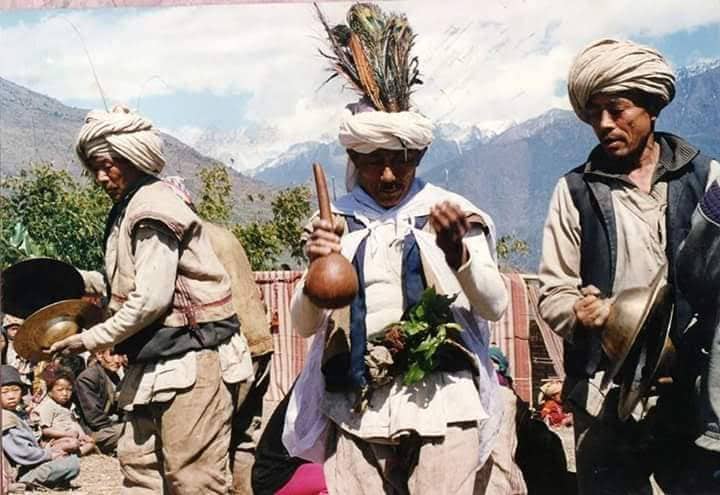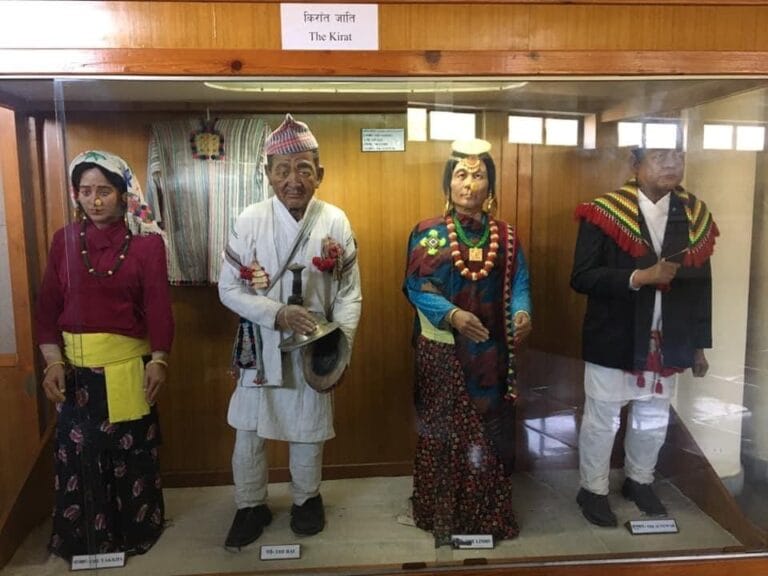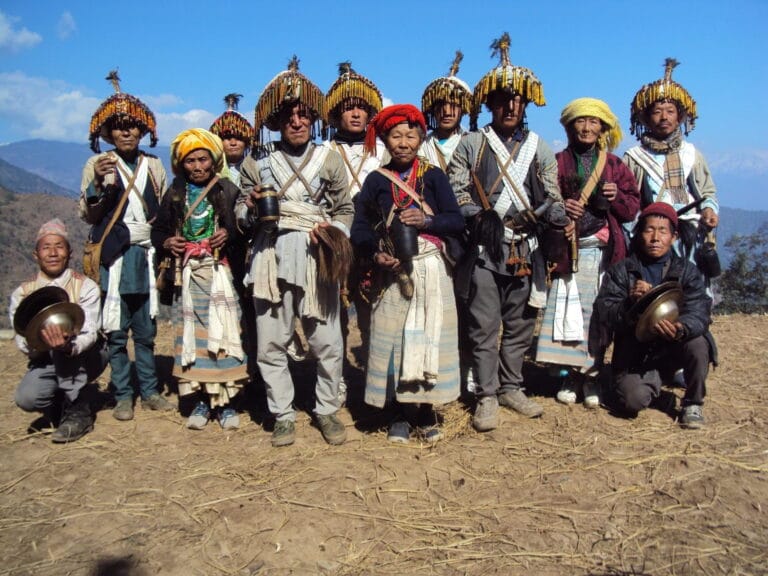Published on 28 November 2024
Understanding Kirat Culture: Rituals, Beliefs, and Spiritual Practices
Culture consists of the expressions, experiences, symbols, behaviors, values, and beliefs that define a society. It includes the daily customs and rituals passed down through generations, shaped by history, and reflecting the shared values of the people. Kirat culture, with its unique traditions and spiritual practices, connects people to nature, their ancestors, and the cycle of life. This deep cultural heritage plays an important role in preserving the Kirat people’s identity.
Kirat Spirituality and Rituals: Exploring Kirat Culture Rituals Beliefs and Spiritual Practices of Rai and Limbu Cultures
In Kirat culture, ceremonies and rituals have deep symbolic meaning. Based on the belief that life follows a cycle, each Kirat community has its own unique heritage. Kiratism, the spiritual practice of many Kirat groups, focuses on a close connection with nature. It involves honoring many natural deities and ancestral spirits, with the belief that ancestors guide and protect them. The Kirat people also practice shamanism, with rituals centered on worshiping nature, the sun, moon, wind, fire, and the pillars of the home.
The rituals are led by a Nakchhong, the tribal priest, also called Mangpa or Bijuwa. Two key deities are central to their faith: Sumnima, the mother goddess representing Earth, fertility, and prosperity, and Paruhang, the sky god symbolizing the heavens. Together, they represent the harmony between Earth and Sky.
In the Limbu tradition, described in their sacred text ‘Mundhum,’ the sky god “Tagera Ningwaphumang” is seen as the creator of life on Earth. “Tagera Ningwaphumang” reincarnates as the goddess “Yuma Sammang” and her male counterpart “Theba Sammang.” The Limbu people also follow different ritual practices like “Phedangma,” “Yema/Yeba,” and “Shamba,” each with special spiritual meaning.
Conclusion
Kirat culture is deeply intertwined with nature, spirituality, and ancestral worship. Its rituals, beliefs, and spiritual practices create a profound connection between the people and their environment. Through the worship of deities and the celebration of nature, the Kirat communities continue to preserve their unique cultural heritage, passing down these traditions for generations to come.
Spread the Word: Celebrate and Share the Rich Culture of the Kirat People
Spread the Word: Celebrate and Share the Rich Culture of the Kirat People If you found this article insightful and interesting, don’t hesitate to share it with others who may appreciate learning about the rich culture and spiritual practices of the Kirat people. We’d love to hear your thoughts! Please leave a comment below and join the conversation. Let’s spread awareness and celebrate the diversity of traditions that make Kirat culture so unique.
Culture consists of the expressions, experiences, symbols, behaviors, values, and beliefs that define a society. It includes the daily customs and rituals passed down through generations, shaped by history, and reflecting the shared values of the people. Kirat culture, with its unique traditions and spiritual practices, connects people to nature, their ancestors, and the cycle of life. This deep cultural heritage plays an important role in preserving the Kirat people’s identity.
Kirat Spirituality and Rituals: Exploring Kirat Culture Rituals Beliefs and Spiritual Practices of Rai and Limbu Cultures
In Kirat culture, ceremonies and rituals have deep symbolic meaning. Based on the belief that life follows a cycle, each Kirat community has its own unique heritage. Kiratism, the spiritual practice of many Kirat groups, focuses on a close connection with nature. It involves honoring many natural deities and ancestral spirits, with the belief that ancestors guide and protect them. The Kirat people also practice shamanism, with rituals centered on worshiping nature, the sun, moon, wind, fire, and the pillars of the home.
The rituals are led by a Nakchhong, the tribal priest, also called Mangpa or Bijuwa. Two key deities are central to their faith: Sumnima, the mother goddess representing Earth, fertility, and prosperity, and Paruhang, the sky god symbolizing the heavens. Together, they represent the harmony between Earth and Sky.
In the Limbu tradition, described in their sacred text ‘Mundhum,’ the sky god “Tagera Ningwaphumang” is seen as the creator of life on Earth. “Tagera Ningwaphumang” reincarnates as the goddess “Yuma Sammang” and her male counterpart “Theba Sammang.” The Limbu people also follow different ritual practices like “Phedangma,” “Yema/Yeba,” and “Shamba,” each with special spiritual meaning.
Conclusion
Kirat culture is deeply intertwined with nature, spirituality, and ancestral worship. Its rituals, beliefs, and spiritual practices create a profound connection between the people and their environment. Through the worship of deities and the celebration of nature, the Kirat communities continue to preserve their unique cultural heritage, passing down these traditions for generations to come.
Spread the Word: Celebrate and Share the Rich Culture of the Kirat People
If you found this article insightful and interesting, don’t hesitate to share it with others who may appreciate learning about the rich culture and spiritual practices of the Kirat people. We’d love to hear your thoughts! Please leave a comment below and join the conversation. Let’s spread awareness and celebrate the diversity of traditions that make Kirat culture so unique.
Culture consists of the expressions, experiences, symbols, behaviors, values, and beliefs that define a society. It includes the daily customs and rituals passed down through generations, shaped by history, and reflecting the shared values of the people. Kirat culture, with its unique traditions and spiritual practices, connects people to nature, their ancestors, and the cycle of life. This deep cultural heritage plays an important role in preserving the Kirat people’s identity.
Kirat Spirituality and Rituals: Exploring Kirat Culture Rituals Beliefs and Spiritual Practices of Rai and Limbu Cultures
In Kirat culture, ceremonies and rituals have deep symbolic meaning. Based on the belief that life follows a cycle, each Kirat community has its own unique heritage. Kiratism, the spiritual practice of many Kirat groups, focuses on a close connection with nature. It involves honoring many natural deities and ancestral spirits, with the belief that ancestors guide and protect them. The Kirat people also practice shamanism, with rituals centered on worshiping nature, the sun, moon, wind, fire, and the pillars of the home.
The rituals are led by a Nakchhong, the tribal priest, also called Mangpa or Bijuwa. Two key deities are central to their faith: Sumnima, the mother goddess representing Earth, fertility, and prosperity, and Paruhang, the sky god symbolizing the heavens. Together, they represent the harmony between Earth and Sky.
In the Limbu tradition, described in their sacred text ‘Mundhum,’ the sky god “Tagera Ningwaphumang” is seen as the creator of life on Earth. “Tagera Ningwaphumang” reincarnates as the goddess “Yuma Sammang” and her male counterpart “Theba Sammang.” The Limbu people also follow different ritual practices like “Phedangma,” “Yema/Yeba,” and “Shamba,” each with special spiritual meaning.
Conclusion
Kirat culture is deeply intertwined with nature, spirituality, and ancestral worship. Its rituals, beliefs, and spiritual practices create a profound connection between the people and their environment. Through the worship of deities and the celebration of nature, the Kirat communities continue to preserve their unique cultural heritage, passing down these traditions for generations to come.
Spread the Word: Celebrate and Share the Rich Culture of the Kirat People
If you found this article insightful and interesting, don’t hesitate to share it with others who may appreciate learning about the rich culture and spiritual practices of the Kirat people. We’d love to hear your thoughts! Please leave a comment below and join the conversation. Let’s spread awareness and celebrate the diversity of traditions that make Kirat culture so unique.




